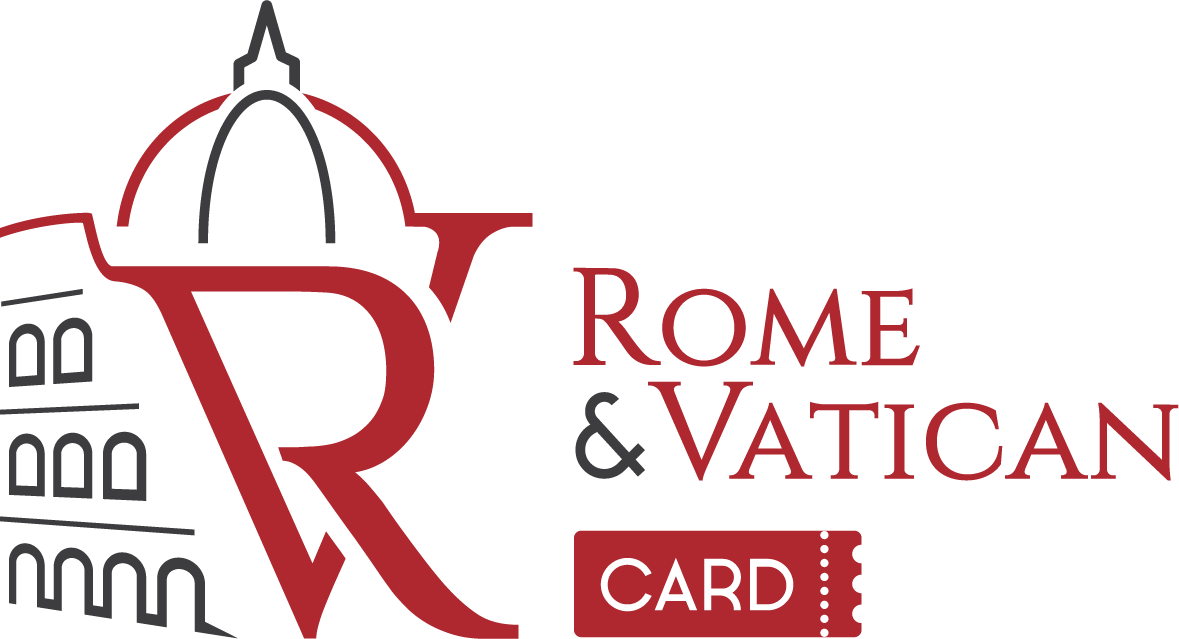What to See in Vatican Museums: Top Things You Can’t Miss
- 8 min read
Discover what to see in Vatican with this complete guide fow what to see in Vatican Museums: from iconic sculptures like the Laocoön Group and Apollo Belvedere, to Michelangelo’s Sistine Chapel, Raphael’s frescoes, historic galleries, Egyptian relics, and hidden gems like the Vatican Gardens and Necropolis. The article is structured by themes: sculptures, galleries, halls, museums, chapels, and practical tips.
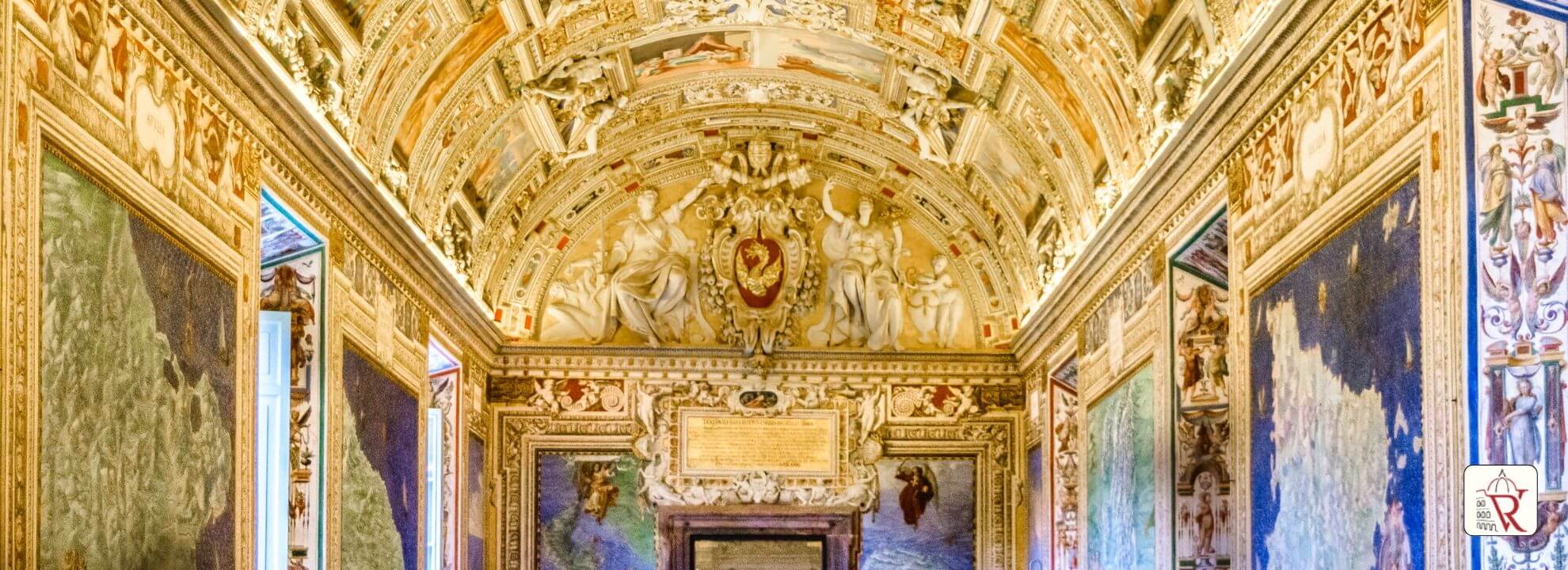
If you’re wondering what to see in Vatican, this in-depth guide will lead you through the Vatican Museums. With over 70,000 works of art, including masterpieces of antiquity and the Renaissance, this is more than a museum visit — it’s a journey through 3,000 years of cultural history.
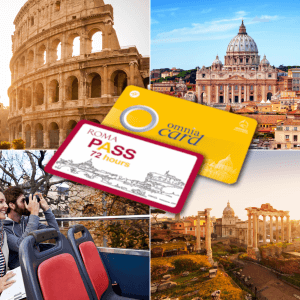
Omnia card 72h + Roma Pass - Jubilee 2025
Vatican Museums: History
To begin with, the Vatican Museums were founded in 1506 by Pope Julius II, following the discovery of the ancient Laocoön Group, now a centerpiece of the collection. Over time, successive popes expanded the museums, amassing one of the most comprehensive art collections in the world. Today, more than 6 million visitors per year explore the halls and galleries, seeking to understand what to see in Vatican for a deeper appreciation of Western civilization.
Vatican Museums Spiral Staircase: The Most Photographed Spot
One of the first sights greeting visitors is Giuseppe Momo’s Spiral Staircase, built in 1932. This architectural marvel features a double-helix ramp system, allowing people to ascend and descend without intersecting paths. Accordingly, it symbolizes spiritual ascent and modern design, blending functionality with aesthetic elegance.
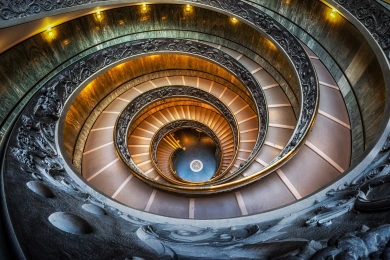
Must-See Vatican Galleries: Maps, Tapestries and Candelabra
Gallery of Maps
Commissioned by Pope Gregory XIII and painted between 1580 and 1583 by Ignazio Danti, the Gallery of Maps stretches over 120 meters and features 40 frescoes of Italy’s regions. Not only does it reflect Renaissance cartographic precision, but also it visually conveys the papacy’s political reach over a unified Italy. As I have noted, this gallery is a highlight in any guide about what to see in Vatican.
Gallery of the Candelabra
This ornate gallery takes its name from the monumental marble candelabra lining its central aisle. These are flanked by antique sculptures and Roman columns, many of which date to the 2nd century AD. As a matter of fact, these works were reinterpreted through a Christian lens during the Renaissance, showcasing the Vatican’s effort to bridge pagan antiquity with Christian symbolism.
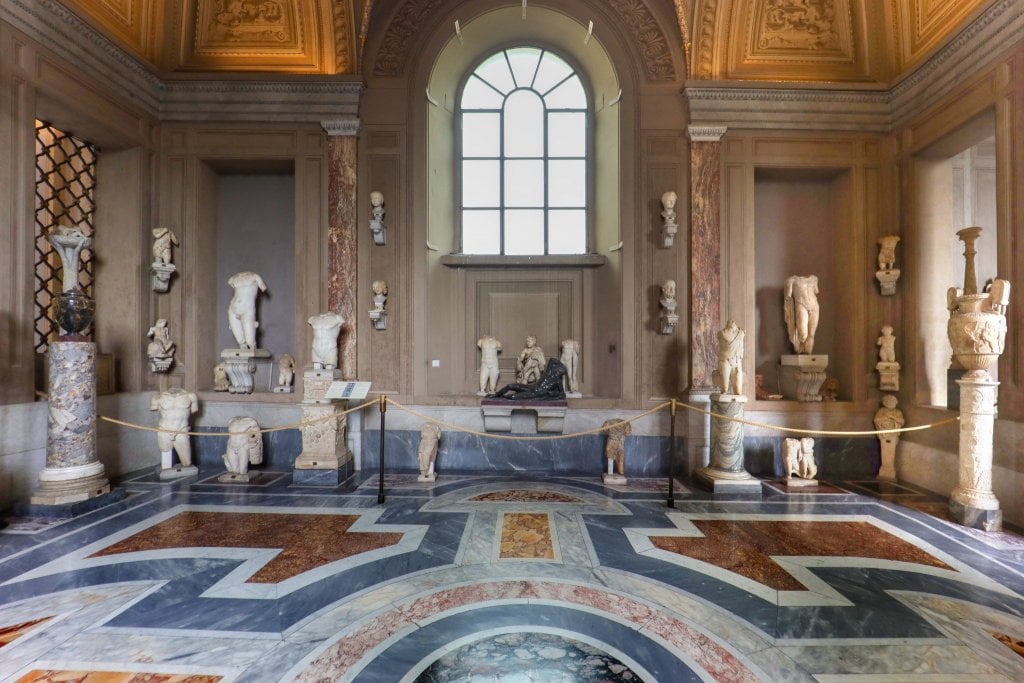
Gallery of Tapestries
Hung with monumental Flemish tapestries woven in Brussels around 1515, this gallery was commissioned by Pope Leo X and based on cartoons by Raphael. The most compelling evidence of their mastery lies in the lifelike optical effects, such as the illusion that Christ’s eyes follow the viewer in the Resurrection tapestry. Thus, the gallery represents a triumph of artistic devotion and illusion.
Lapidary Gallery
Housed within the Chiaramonti Museum, the Lapidary Gallery contains over 3,000 ancient inscriptions, such as funeral epitaphs and public decrees. Many of these texts date from the 1st to 4th centuries AD and are invaluable for understanding the daily life, language, and civic structures of Ancient Rome. Therefore, this gallery offers an intimate, text-based counterpoint to the visual grandeur elsewhere in the museum.

Omnia card 72h + Roma Pass - Jubilee 2025
Vatican Museums Sculptures: Masterpieces You Shouldn’t Miss
To enumerate the most iconic sculptures that define what to see in Vatican, one must focus on the gems of the Museo Pio-Clementino.
Statue of the Nile
This Roman personification of the River Nile depicts a reclining male deity with 16 children, representing the cubits of Nile flood levels. Surrounded by sphinxes and lotus flowers, the statue combines Egyptian iconography with Greco-Roman sculptural forms, illustrating Rome’s cultural absorption of Egypt.

Laocoön and His Sons
Unearthed in 1506 and dating to the 1st century BCE, this dramatic marble group shows the Trojan priest Laocoön and his sons attacked by sea serpents. Notably, its dynamic composition and emotional expressiveness stunned Michelangelo and helped revive interest in Hellenistic art. Without a doubt, it is one of the most essential pieces when discussing what to see in Vatican.
Belvedere Torso
Despite its incomplete form, the Belvedere Torso, signed by Apollonios of Athens, deeply influenced Renaissance artists. With its powerful musculature and dynamic twist, this fragment embodies idealized male form and served as a direct reference for Michelangelo’s nudes in the Sistine Chapel.
Apollo Belvedere
This statue, a Roman copy of a lost Greek bronze, portrays Apollo just after releasing an arrow. Admired for its proportional harmony and serene expression, it became a canonical example of classical beauty. During the 18th century, it was even considered the highest embodiment of artistic perfection.
Osiris-Antinous
This statue of Antinous as the Egyptian god Osiris reflects the syncretism of Roman religion. Commissioned under Emperor Hadrian, it combines youthful beauty with symbols of death and rebirth. This statue embodies a unique blend of imperial politics and religious iconography.
Vatican Museums Rooms and Halls
Sala delle Muse
Named for the nine Muses of Greek mythology, this hall celebrates the liberal arts. At its center stands Apollo Musagetes, while the surrounding statues represent inspiration in poetry, astronomy, history, and more. Additionally, mosaic floors from Hadrian’s Villa enrich the room with artistic and archaeological depth.
Sala degli Animali
This hall contains over 150 marble and stone animal sculptures, from real creatures like lions and deer to fantastical hybrids. Created mainly in the 18th century, these works reflect Enlightenment-era curiosity and serve as a sculptural encyclopedia of the natural and imaginary worlds.

Omnia card 72h + Roma Pass - Jubilee 2025
Vatican Museums Collections: Egyptian, Classical, Papal and More
Gregorian Egyptian Museum
Founded by Pope Gregory XVI in 1839, this museum preserves ancient Egyptian artifacts such as mummies, stelae, and funerary objects. Especially important are the items recovered from Hadrian’s Villa, which show the emperor’s deep interest in Egyptian theology.
Vatican Pinacoteca
Housing 18 rooms of paintings from the 12th to 19th centuries, the Pinacoteca features masterpieces by Giotto, Raphael, Leonardo, Caravaggio, and Bernini. Highlights include:
- Raphael’s Transfiguration: his last and most complex painting, blending divine epiphany with human suffering.
- Caravaggio’s Deposition: a powerful display of chiaroscuro and emotional realism.
- Leonardo da Vinci’s St. Jerome: unfinished, yet incredibly expressive.
Carriage Pavilion
A delightful detour, this space displays papal carriages and early automobiles, including the 19th-century Berlina di Gran Gala. Thus, it charts the evolution of papal transportation as a mirror of changing times.
Anima Mundi (Ethnological Museum)
Reopened in 2019, this museum contains over 80,000 artifacts from every continent, from African masks to Chinese Buddhist statues. Its mission is to promote intercultural dialogue through sacred and secular objects.

Omnia card 72h + Roma Pass - Jubilee 2025
Sistine Chapel: Michelangelo’s Masterwork
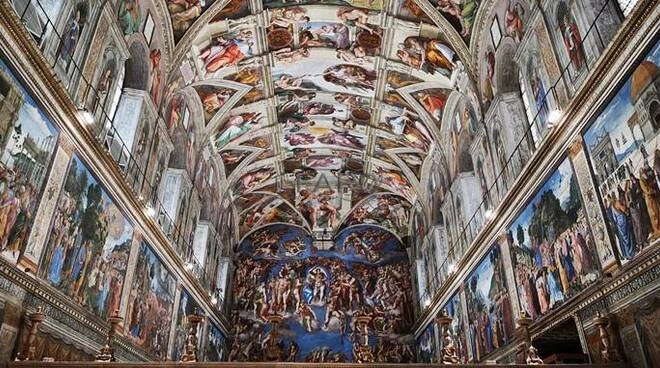
Between 1508 and 1512, Michelangelo painted over 300 figures across the Sistine Chapel ceiling, including the iconic Creation of Adam. Later, from 1536 to 1541, he returned to paint the Last Judgment, a dynamic fresco depicting Christ’s return, resurrection of the dead, and the fate of souls. Despite later censorship, these frescoes are arguably the most influential religious artworks in history. Evidently, they are among the top highlights of what to see in Vatican.
Raphael’s Rooms (Stanze di Raffaello)
Commissioned by Pope Julius II, these four rooms contain Raphael’s greatest frescoes, including:
- School of Athens: a humanist tribute where Plato, Aristotle, and Socrates converse in a classical setting.
- Disputa: a theological vision of the Eucharist, uniting saints, scholars, and the Trinity.
- Parnassus: a celebration of poetry featuring Homer, Virgil, and Dante.
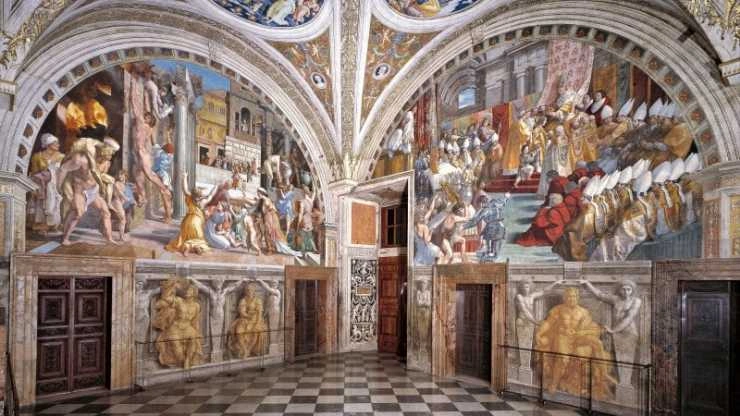
Each fresco fuses classical philosophy and Christian doctrine, providing a rich intellectual layer to what to see in Vatican.
Hidden Gems and Sacred Spaces in the Vatican Museums
Contemporary Art Collection
Since 1973, the Vatican has collected works by modern masters like Dalí, Chagall, Bacon, and van Gogh, offering a striking contrast between modern spiritual expressions and traditional sacred spaces.
Vatican Necropolis
Beneath St. Peter’s Basilica lies the 1st-century necropolis believed to hold St. Peter’s tomb. Accessible only via special guided tours, the site reveals the layered history of Roman, Christian, and papal burial practices.
Vatican Library
Established in 1475, the Vatican Apostolic Library houses over 1.1 million printed books and 80,000 manuscripts, including ancient Bibles, medieval codices, and Renaissance treatises. The Sistine Hall, decorated by Melozzo da Forlì, is itself a masterpiece of fresco painting.
Vatican Gardens
Covering nearly 23 hectares, the gardens are dotted with Renaissance fountains, Marian shrines, and rare botanical species. They offer a peaceful escape and rare views of the Cupola of St. Peter’s.

Omnia card 72h + Roma Pass - Jubilee 2025
Practical Advice for Your Visit
- Book tickets in advance, especially early-morning slots to avoid crowds.
- Dress modestly: no bare shoulders or shorts.
- Plan at least 4 – 5 hours for a meaningful visit; a full day if you include hidden areas or guided tours.
- Photos allowed in most areas (except the Sistine Chapel).
- Best days to visit: Tuesday to Thursday mornings, especially between November and February.
More Useful Articles on the Vatican Museums
Planning your visit to the Vatican Museums? Check out these in-depth guides to help you prepare:
- What to Know Before Visiting the Vatican Museums: practical tips on tickets, best times, guided tours and rules.
- Vatican Dress Code: What to Wear in the Vatican Museums: detailed instructions to avoid entry issues.
- Vatican Dress Code Samples: visual examples of outfits that meet or break the dress code.
Each of these resources complements this guide to ensure you know exactly what to see in Vatican and how to make the most of your visit.

